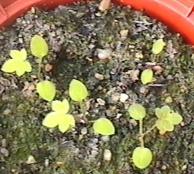
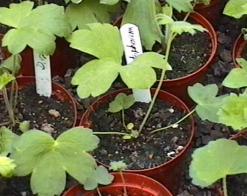
| Return to Asiatic Species List | Return to Species cover page | Return to Home Page |
D. ceratophorum, is one of the delphinium species collected during the Alpine Garden Society (AGS) Expedition to China in 1994 and it has proved very interesting to grow. This species is briefly described in the report on the expedition in the Bulletin of the Alpine Garden Society for June 1996. D. ceratophorum was found on the Zhongdian plateau and the Yulong Shan (Jade Dragon mountains) at an altitude of 3200m in NW Yunnan. It is described as having bright blue or violet blue flowers on a wide-spreading inflorescence up to 60cm tall.
Seeds purchased from the AGS were sown in late January in a pot that was left outdoors exposed to the weather. Germination began in March. Seedlings are small compared to those of garden delphiniums but are of similar form. Development proceeds normally with the growth of true leaves and the seedlings were pricked out into individual pots when large enough to handle.
 |
 |
As the seedlings grew, the leaf stalks (petioles) became unusually long compared to garden delphiniums. Two seedlings at the stage shown here were planted out in the garden. A flower stem soon appeared. A notable feature of the growth even at this early stage was that there were signs of further growth points developing at the base of the stem.
Flower stems grow outwards from the centre of the plant and arch upwards. The flowers are arranged in small clusters of three to five florets. The sequence in which these clusters develop is quite unlike that for development of the inflorescence in familiar garden delphiniums. When the first terminal cluster of flower buds forms at the top of the growing stem, a new leading shoot develops from the leaf joint immediately below it. Another cluster of flowers then appears at the next leaf joint and the process repeats. The flower clusters are thus arranged rather like the points on the antlers of a male deer.
Once flowering began in late July, small numbers of flowers were present until mid-November as the result of stem branching and development of new stems from the base of the plant. The lateral spread of the plant exceeded it's height (50cm).
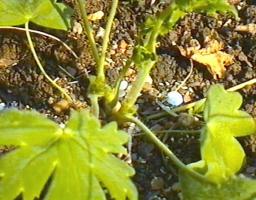 |
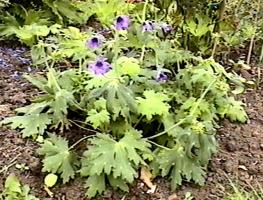 |
This species has large florets, 35 – 40mm across with a spur about 20mm long. The honey leaves (eye petals) are unusually long (12mm) and deep blue at their base. The sepals are violet in the form grown.
The flowers set seed readily and the seed pods ripened quickly, even under low temperature conditions in November.
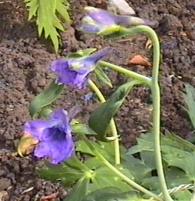 |
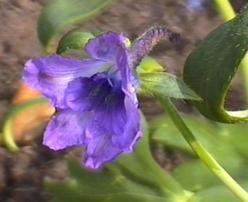 |
| Return to Asiatic Species List | Return to Species cover page | Return to Home Page |